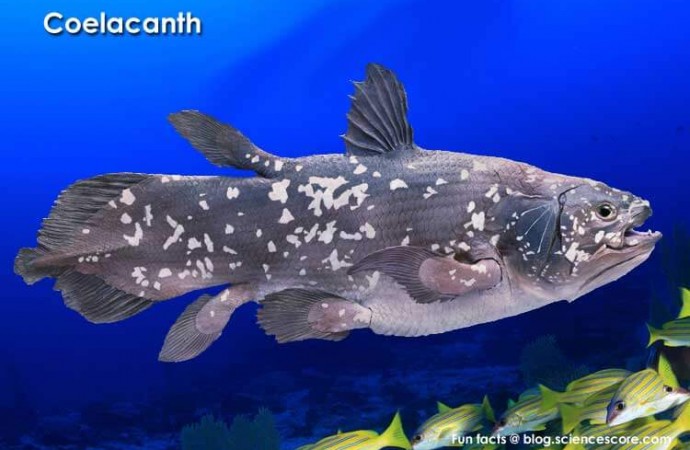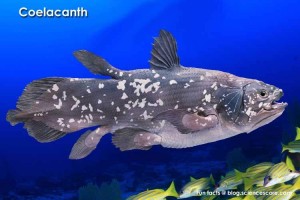400 million years ago, the oceans on the planet looked very different than they do now. One strange inhabitant of these oceans was a fish called a coelacanth: it had giant blue scales and four fins that stuck out from its body on lobes. When it swam, it would move these fins much like a
400 million years ago, the oceans on the planet looked very different than they do now. One strange inhabitant of these oceans was a fish called a coelacanth: it had giant blue scales and four fins that stuck out from its body on lobes. When it swam, it would move these fins much like a trotting horse. It’s even believed to be related to the ancestors of the first animals to walk on land!
It was believed that these fish disappeared with the big dinosaurs 65 million years ago, so it came as a massive shock to scientists in 1938 when the curator of a tiny museum in Africa visited a local fisherman to wish him a Merry Christmas and discovered a coelacanth in his daily catch!
Even more astonishing, an American scientist was visiting a market in Indonesia with his new bride in 1997 when she discovered a coelacanth for sale!
Coelacanths are like living fossils: they are the only example of a group of fish that lived 350 to 400 million years ago. But how is it that coelacanths remained unchanged and undiscovered all this time, in more than one place on the planet?
Most of it has to do with their habitat. Coelacanths live in incredibly deep waters – so deep that bringing one to the surface almost always kills it. They’re also very large. Millions of years in the cold depths of the ocean with plenty of prey but no real predators meant that coelacanths could live on unchanged and undisturbed by humans. Even now they are still very much a mystery, because it’s almost impossible to explore oceans at that depth.
Who knows what other animals we believe went extinct might also be hiding beneath the waves?
















































Leave a Reply